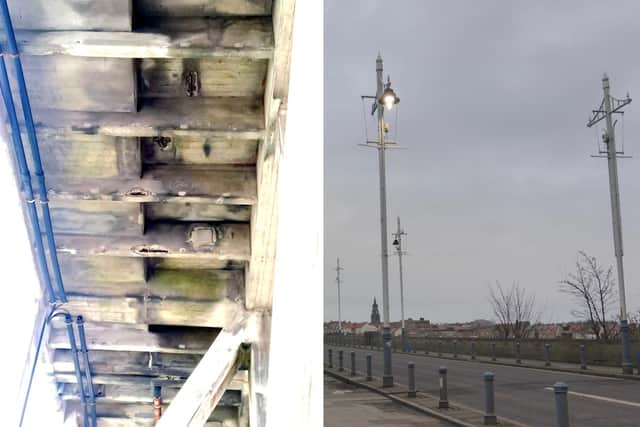Northumberland County Council sets out position on the New Bridge in Berwick, with inspection due next year
and live on Freeview channel 276
A town resident contacted Berwick East councillor Georgina Hill after looking underneath at the deck area at the West End side of the bridge, raising concerns that it is suffering in parts from what he believes could be Alkali-silica reaction (ASR), more commonly known as ‘concrete cancer’.
The current narrow carriageway was among the other points mentioned.
Advertisement
Hide AdAdvertisement
Hide AdAfter his concerns were passed on to the local authority, Coun John Riddle, the council’s cabinet member for improving roads and highways, issued the following statement: “Royal Tweed Bridge is subject to a routine inspection programme, including General Inspections and Principal Inspections, the next Principal Inspection being scheduled for 2024.


“These inspections are undertaken to confirm the serviceability of the structure to ensure the safety for use by the travelling public. We are aware of the condition of the structure and consider it to be in a serviceable condition.
“The situation will be reviewed following the upcoming Principal Inspection, as is normal practice, and any necessary maintenance works will be scheduled.
“The condition of the concrete that has resulted in spalling is as a result of corrosion of the reinforcement that is a characteristic of this vintage of reinforced concrete and is not as a result of ASR, which has completely different visual appearance.
Advertisement
Hide AdAdvertisement
Hide Ad“The narrowing of the carriageway, carried out in the 1990s, resulted from shortcomings in the original 1920s design. To remedy this would require extensive alterations, which would not only represent a significant cost undertaking but also difficulties with obtaining the necessary Listed Building Consents.”